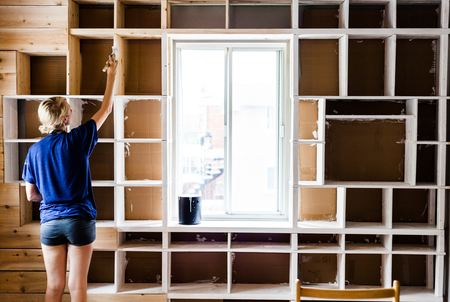1. Understanding the British Downsizing Trend
In recent years, Britain has witnessed a noticeable shift towards downsizing, with more homeowners and renters opting to move into smaller properties. This trend is influenced by a complex blend of market forces and evolving cultural attitudes. The UK housing market, marked by rising property prices and increased living costs, has encouraged many—particularly retirees and young professionals—to reconsider their space requirements. Additionally, changing family structures, such as children leaving home or couples seeking to simplify their lifestyles, are driving this transition. British culture traditionally values cosy, manageable spaces that promote comfort and efficiency, making the idea of downsizing particularly appealing. As sustainability becomes a greater priority, reducing ones footprint by moving to a smaller home aligns perfectly with the nation’s growing environmental consciousness. Understanding these dynamics is crucial for anyone preparing to navigate the packing process when transitioning to a more compact living space in Britain.
Assessing Your Belongings
Downsizing to a smaller British home requires an honest audit of your current possessions. With the typical UK property offering less storage space than many might expect, a systematic approach is essential. Begin by categorising your items room by room—kitchens, bedrooms, lounges, and those notorious under-stair cupboards are all ripe for review. Consider the practicalities of daily British life: do you really need three teapots, or could one suffice? Is that collection of mismatched crockery worth transporting, or would a streamlined set be more in keeping with your new lifestyle?
| Category | Questions to Ask | Keep/Sell/Donate/Dispose |
|---|---|---|
| Clothing | Have I worn this in the last year? Does it suit the British climate? | Donate unused, keep essentials for all seasons |
| Kitchenware | Do I use this appliance regularly? Will it fit in a smaller kitchen? | Sell duplicates, keep versatile items |
| Furniture | Will this fit through a terraced house doorway? Is it multipurpose? | Sell bulky pieces, keep compact or modular furniture |
| Books & Media | Will I reread or reference these? Can I go digital? | Donate excess, keep meaningful titles |
| Keepsakes | Does this have sentimental value? Can I digitise memories? | Store select items, digitise where possible |
Embrace the quintessentially British ethos of ‘make do and mend’ but also recognise when something has outlived its usefulness. Be realistic about what will fit and function in your new space. Use this opportunity to invest in quality over quantity—a classic approach in the UK’s property market. Decluttering not only streamlines your move but also sets the tone for a simpler, more efficient lifestyle in your new home.

3. Decluttering: What to Keep, Donate, or Sell
Downsizing to a smaller British home calls for a strategic approach to decluttering. Start by assessing your belongings room by room and make thoughtful decisions about what truly deserves space in your new home. Consider the British tradition of donating gently used items to local charity shops—these are not only fantastic for giving back to the community but also help extend the life cycle of quality goods. For items with potential value, car boot sales are a quintessentially British way to turn clutter into cash. These lively weekend markets offer an opportunity to sell everything from books to bric-a-brac while socialising with locals. Don’t forget to follow proper recycling etiquette; many councils provide detailed guidelines on how to dispose of electronics, textiles, and household waste responsibly. When deciding what to keep, focus on items that are functional, sentimental, or essential for your new lifestyle. By embracing these tried-and-tested UK-specific methods, you’ll find the art of decluttering not only clears physical space but can also bring peace of mind during your move.
Efficient Packing Strategies
Packing efficiently is crucial when downsizing to a smaller home in Britain. Making smart choices with packing methods and materials will not only save space but also protect your belongings from the UK’s famously unpredictable weather. Below are some essential strategies tailored for British homes and storage scenarios.
Compact Packing Methods
- Room-by-Room Sorting: Start by tackling one room at a time. This prevents items from different rooms getting mixed up, making both packing and unpacking more manageable.
- Utilise Vertical Space: Pack boxes so that heavier items go at the bottom and lighter or fragile items sit on top. Stack vertically to maximise limited storage areas commonly found in British flats or terraces.
- Vacuum Bags: Use vacuum-sealed bags for clothing, bedding, and soft furnishings. These bags dramatically reduce bulk and protect textiles from dampness—a common issue in the UK climate.
- Nesting Items: Place smaller items inside larger ones (such as kitchen containers or suitcases) to conserve space.
- Label Clearly: Labelling each box with its contents and intended room speeds up the move-in process and helps locate essentials quickly after arrival.
Recommended Packing Materials for UK Conditions
| Packing Material | Best For | UK Weather/Storage Consideration |
|---|---|---|
| Double-walled Cardboard Boxes | General belongings & fragile items | Offers extra strength for stacking; resists damp better than single-walled options |
| Bubble Wrap & Packing Paper | Crockery, glassware, electronics | Adds protective cushioning against bumps during transit on bumpy British roads |
| Plastic Storage Totes | Seasonal clothing, important documents | Mould and moisture resistant—ideal for garage or loft storage prone to condensation |
| Tape & Stretch Wrap Film | Securing boxes, furniture protection | Keeps boxes sealed tight against rain showers during loading/unloading |
| Damp Absorbers (Silica Gel Packs) | Sensitive items like books, photographs | Counters humidity, especially important if using self-storage facilities in the UK’s wet climate |
Sensible Storage Options in Britain
- Self-Storage Units: Consider climate-controlled units for valuable or delicate possessions—especially if you’re storing items long-term in areas prone to high humidity or cold snaps.
- Shed & Loft Usage: Only store non-perishable goods in garden sheds or lofts, as these spaces can be exposed to temperature fluctuations and moisture.
- Under-Bed Storage Solutions: Maximise every inch of your new home with under-bed drawers or rolling bins—perfect for spare linens or seasonal clothes.
By adopting these efficient packing strategies and selecting materials suited to British homes and weather, you’ll ensure a smoother transition into your downsized living space while keeping your investments safe and well-organised.
5. Managing the Move: Logistics and Support
When downsizing to a smaller home in Britain, a smooth move requires careful planning and coordination with local professionals. One of your first steps should be researching reputable British removal firms. Look for companies with strong reviews, transparent pricing, and experience in handling moves within your region. National chains like Pickfords or Britannia Removals are well-known, but don’t overlook trusted local independents, which may offer more personalised service and flexibility.
Next, liaise early with your letting agent or estate agent to align moving dates and gain access to keys. They can often recommend reliable movers or even help coordinate timings between current and new properties to minimise stress on moving day.
If you find you have more belongings than will comfortably fit in your new home, consider short- or long-term storage solutions. British towns typically offer a range of secure self-storage options, from major providers like Big Yellow or Safestore to community-run facilities. Make sure the facility is easily accessible from your new location and check for features such as 24-hour security and flexible contracts.
By engaging trusted local support—removal firms, letting agents, and storage providers—you can ensure that the logistics of downsizing are managed efficiently, allowing you to focus on settling into your new home.
6. Settling Into Your New, Smaller Home
Embrace the British Community Spirit
Downsizing in the UK is more than just a change in square footage—its an opportunity to become part of a close-knit community. Take time to introduce yourself to your neighbours; a friendly chat over a cuppa can go a long way in building relationships. Many British towns and villages have active residents associations, local clubs, or neighbourhood WhatsApp groups where you can quickly integrate and stay informed about whats happening locally.
Maximise Every Inch of Space
Adapting to a smaller home requires thoughtful planning. Invest in multi-functional furniture such as ottomans with storage or fold-down tables. Make use of under-bed storage, floating shelves, and clever organisers for wardrobes and cupboards. In true British fashion, utilise your airing cupboard or loft space efficiently. Consider vertical gardening if you miss having a garden—window boxes and hanging baskets are charming and practical for compact outdoor spaces.
Leverage Local Resources
The UK offers numerous resources for those adjusting to smaller living. Charity shops are perfect for finding affordable homeware while supporting local causes. If you find you have excess belongings, Freecycle and local Facebook groups make it easy to donate or swap items within your community. Take advantage of council-run recycling centres for responsible disposal of unwanted goods.
Adopt a Minimalist Mindset
Living with less is easier when you focus on quality over quantity—a mindset that resonates deeply with British sensibilities. Curate your belongings around what truly adds value to your daily life, whether thats family heirlooms or beloved books. Regular decluttering sessions will keep your new home comfortable and organised.
Stay Engaged and Active
Your downsized lifestyle can open doors to new activities and friendships. Explore walking groups, book clubs at the local library, or volunteer opportunities that keep you engaged with the community. Remember, settling into your smaller British home is not just about adapting your physical space but also embracing a refreshed way of life—one that prioritises meaningful connections and smart living solutions.


